The Rover SD1 is proof that even from the mess that was British Leyland (BL) some truly great engineering and design emerged.
By 1971, Rover needed a replacement for its technically sophisticated but ageing and expensive to build P6 saloon. Stylish rivals from Citroën, Ford and Renault showed mass market brands could sell executive class cars at lower prices, while BMW was making inroads with its 5-Series. Quite simply, the P6 was a 1960s car in a 1970s world. Rover’s answer was to outdo them all with a better, bolder machine.

Bringing together the dream team that had created the Range Rover, BL put Spen King in charge. David Bache was given the task of styling the SD1, which stood for Specialist Division project number one, and Gordon Bashford took care of the chassis and packaging of this very different breed of Rover. After some false starts on the styling front, Bache took inspiration from Italian supercars, notably the Ferrari Daytona. The influence of the Daytona is obvious in the SD1’s front indicators and overall shape, which abandoned the traditional four-door saloon body in favour of a five-door fastback.
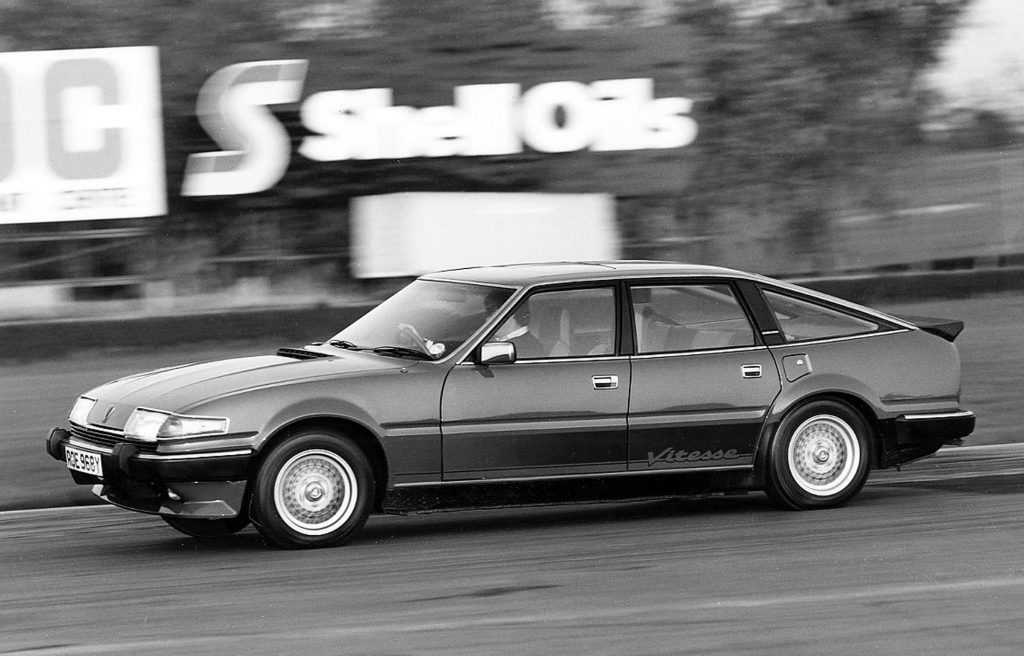
Under the skin, the SD1 was less radical, dropping the advanced suspension design of the P6 and replacing it with a simple live rear axle with Watts linkage and torque tube. Up front, there were MacPherson struts and engine bay designed around the all-alloy V8 engine that was the only part carried over from the P6.
From the outset, the plan was to make the SD1 as simple and cost-effective as possible to build. This was even reflected in clever details such as the single-piece dashboard moulding that worked for both right- and left-hand drive cars. Where the steering column came through the dash on one side, an air vent plugged the hole on the other.
At launch in 1976, Rover only offered the 3.5-litre V8 engine and an automatic gearbox, but 2.3- and 2.6-litre straight-six engines developed from the old Triumph unit arrived at the end of the 1977. The 2600 model was not much slower than the V8, offering 121mph to the 3500’s 125mph, but the six-pot model had a useful fuel economy advantage that made it popular with company car drivers. To broaden the appeal of the SD1, Rover offered the V8-S in 1979, but it was short-lived and replaced by the 3500SE in 1980.
A comprehensive facelift in 1982 freshened up the SD1 and finally brought the leather and wood interior furnishings that many buyers thought a Rover should have. It also introduced the four-cylinder 2000 model with an O Series engine with 101bhp that was still good for 105mph. In April 1982, Rover also added the 2400SD Turbo with an Italian-built VM turbodiesel engine. It could offer a very decent for the time 30mpg, though it never really caught on as diesel was still a decade away from being the company car fuel of choice.
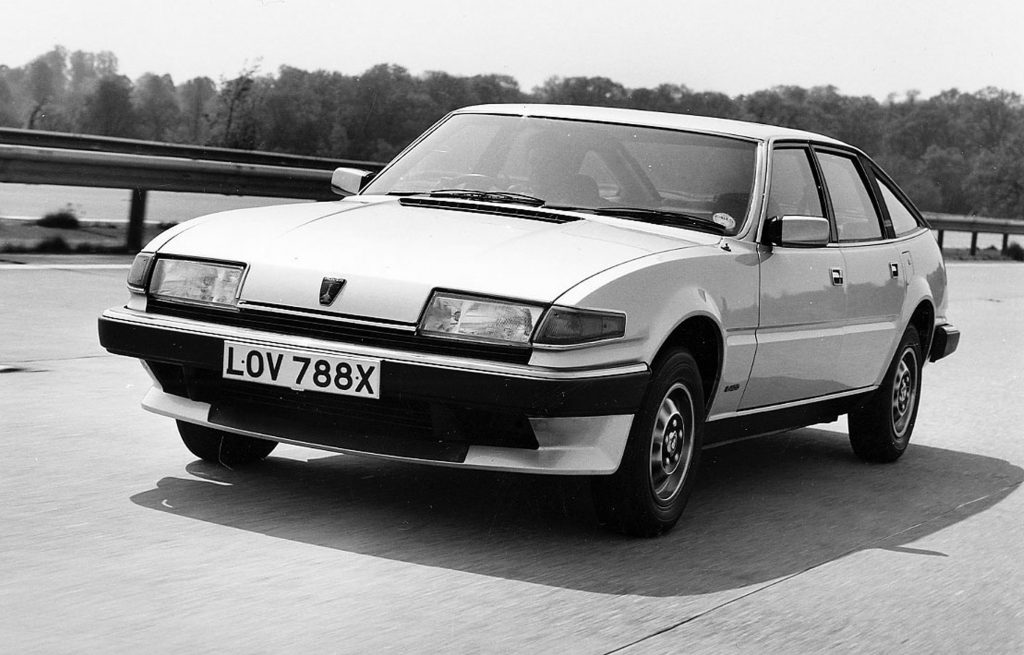
However, Rover had kept best till last as it gave the world the SD1 Vitesse at the end of 1982. A fuel-injected version of the 3.5 V8 delivered 190bhp, while lowered suspension, multi-spoke alloy wheels, larger front brakes discs, and big spoilers front and rear gave it the looks and ability to impress. The Vitesse could hit 135mph and cover 0-60mph in 7.1 seconds, while the rare homologation Twin Plenum version came with 200bhp to take the SD1 into touring car racing and rallying.
Of the 3897 Vitesses built, only 363 were sold with an automatic gearbox. However, Rover also used the 190bhp V8 in the Vanden Plas EFi model as the ultimate in speed and luxury and it had the auto as standard.
When the curtain came down on SD1 production in 1986, more than 300,000 of this innovative Rover had been built. It won the 1977 European Car of the Year title and took the 1984 British Touring Car Championship in the hands of Andy Rouse. It all proved the SD1 was spot on and why it is now a deserved classic.
What’s a Rover SD1 like to drive?
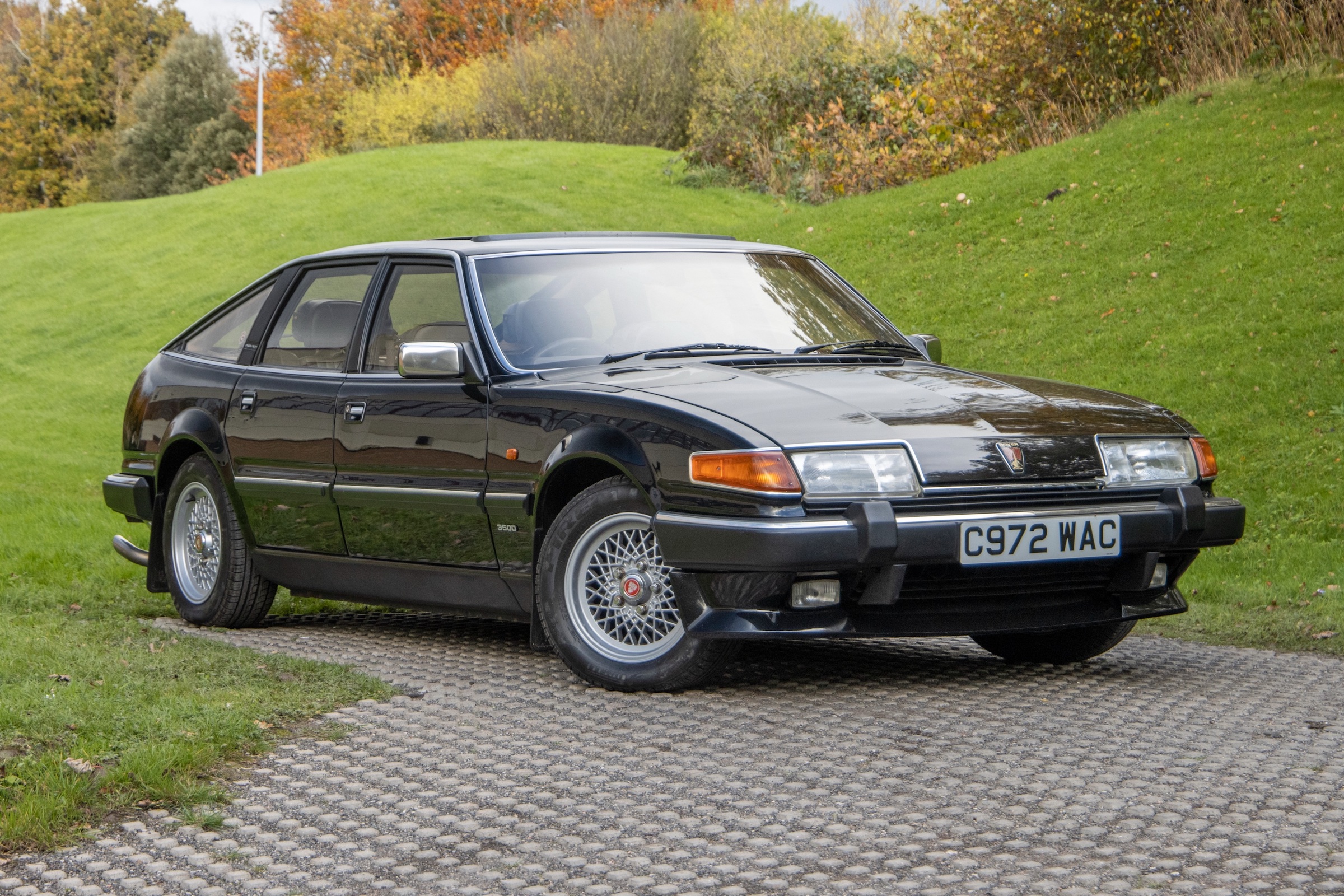
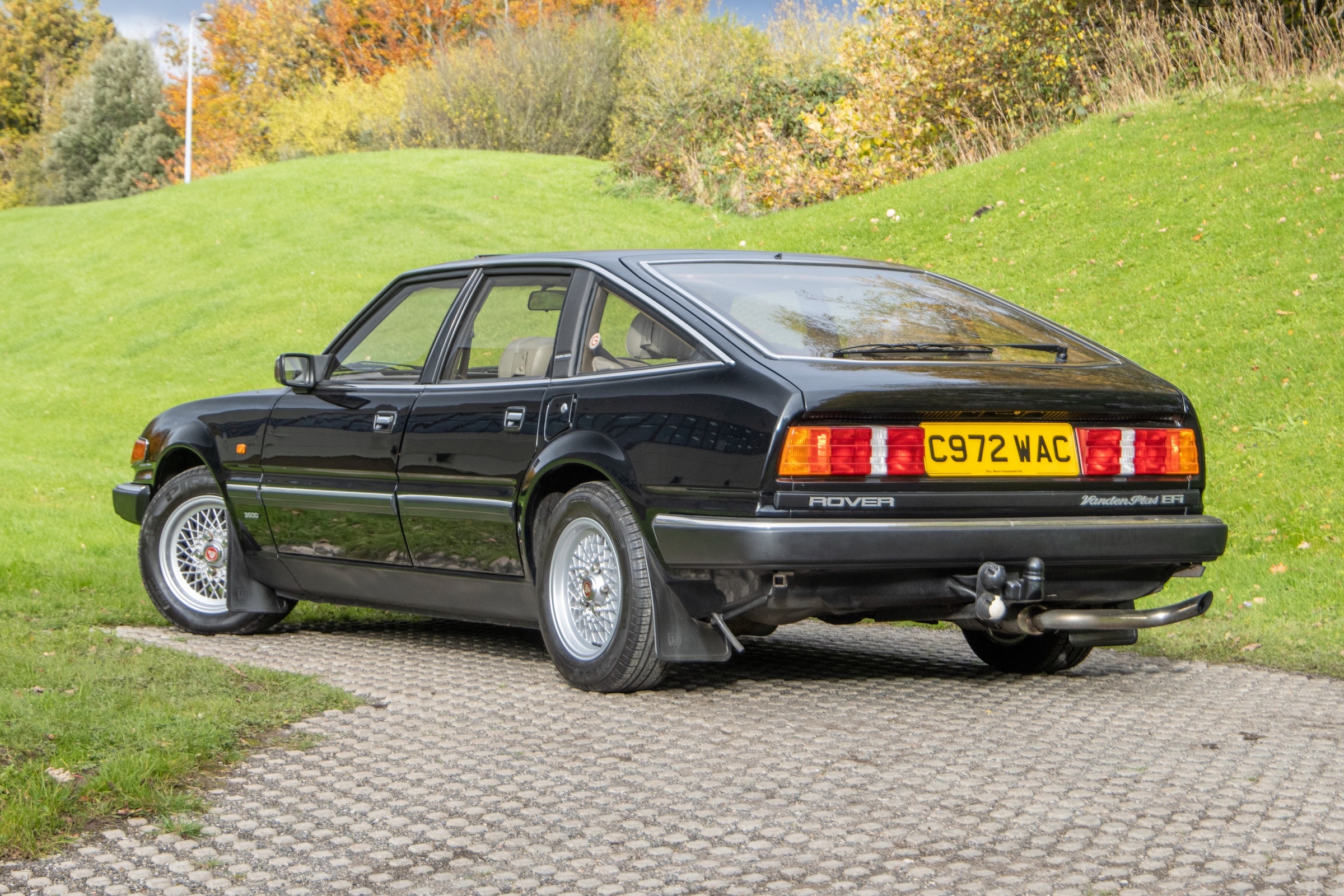
Rover went for a very simple set-up for the SD1 to save costs, but fortunately for the firm its engineers worked wonders with what they had. The result is a car that thoroughly earned its place in the executive car market of its time.
A Jaguar XJ offered a more cosseting ride quality, but the SD1 showed it could cover battered roads without passing on those blows to its occupants’ behinds. This was complemented by accurate steering with good feel that let the driver place the Rover precisely on the road, yet power assistance made it easy to drive the fastback at lower speeds and while parking.
Handling was another area where Rover excelled with the SD1 despite its simple design. It turned and held on through corners in a stable fashion, though there were some comments in the press that the tyres were not up to the chassis’ ability, but there was little Rover could do about that at the time.
When the Vitesse was launched, Car magazine was moved to describe the Rover as ‘a poor man’s Aston Martin’, and it was about as accurate a summation as you’d get. The V8 motor offered 35bhp extra over the standard 3500 and performance was right up there alongside the likes of the BMW 535i. Sitting lower to the ground and on broader tyres, the Vitesse had nimble handling that belied the size of the car, while the bigger brakes that were developed from those fitted to police-spec cars slowed the Rover very ably.
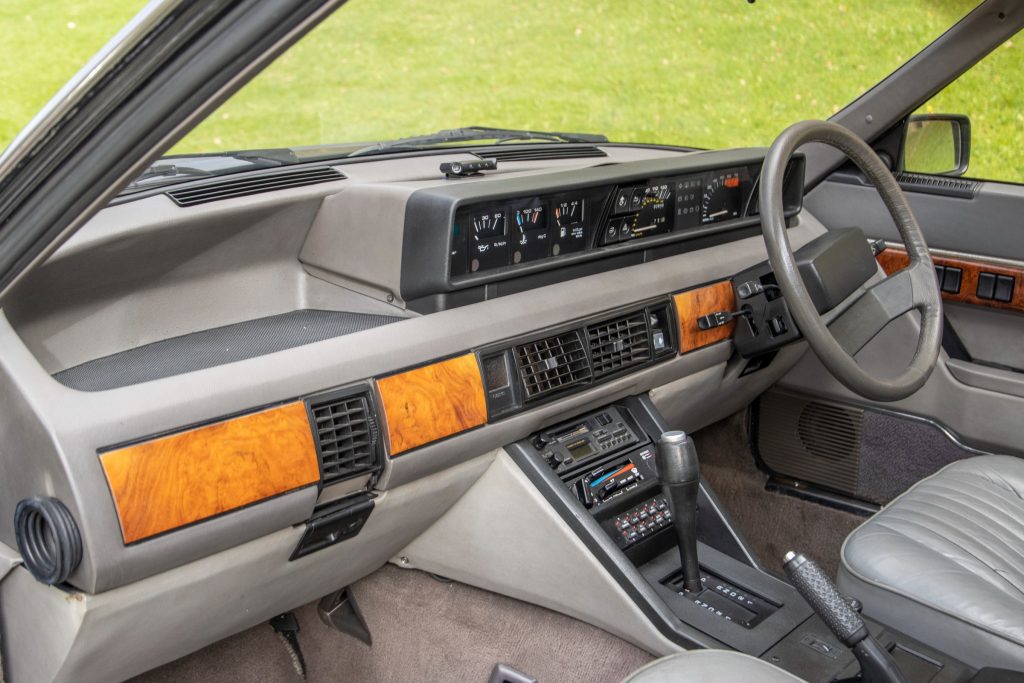
The V8 engine is the motor that most buyers wanted and its free-revving nature made it a good choice. It could pull cleanly from low revs and a well maintained Rover V8 remains a thing of joy to use and listen to. The manual gearbox is not as slick as a BMW’s, but the changes are smooth, or you could have the three-speed auto ’box that suits the car well.
However, don’t dismiss the six-cylinder 2300 and 2600 models that are only a fraction slower than the V8 in the real world. Both can top 110mph and they pick up keenly from low in the rev band with no hesitation. The same applies the 2.0-litre, four-cylinder O Series engine that is better than it appears on paper. As for the 2400SD Turbo, it’s far from the most refined diesel you’ll ever drive but it plods along and has a curiosity value nowadays.
Sitting inside any SD1, taller drivers will find their legs a little cramped even with the seat pushed back all the way. There’s decent headroom and good all-round vision, but make sure you fit before spending money on a car. Those in the rear seats get a good deal of space, and the boot is big thanks to the hatchback design.
How much does a Rover SD1 cost?
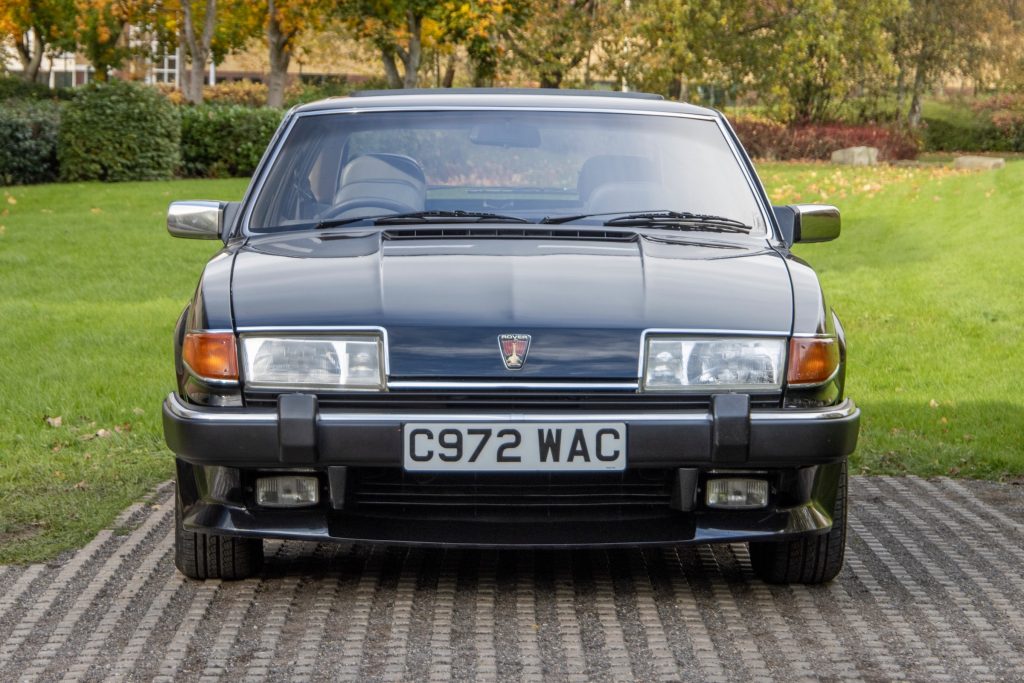
The most sought-after Rover SD1 is, unsurprisingly, the Vitesse model. Find one in good condition and you can expect to pay around £10,000 for a usable car that needs only small jobs to make it very smart. The market is moving for this model and the very best Vitesses are now up around £19,000. If you come across a Vitesse with an automatic gearbox, it’s a real rarity but not worth paying any extra for.
However, the twin plenum model that was made to homologate changes for racing in the European Touring Car Championship are more desirable, though be careful to check any car you look at is one of the two batches made to complete the required 500 production cars.
Other V8 models in the SD1 line-up are all worth about the same, so budget on spending between £8500 and £10,000 for the very smartest cars. At the lower end of the market, running V8s that need some work to bring them up to scratch will cost you from around £3000. Either of the six-cylinder models will be about £1000 less than this across the price spectrum, while the 2000 comes in even cheaper with starting prices at £1500 for a working car and £6500 for the best. As for the diesel, its prices are on a par with the 2300 and 2600.
What goes wrong and what should you look for?
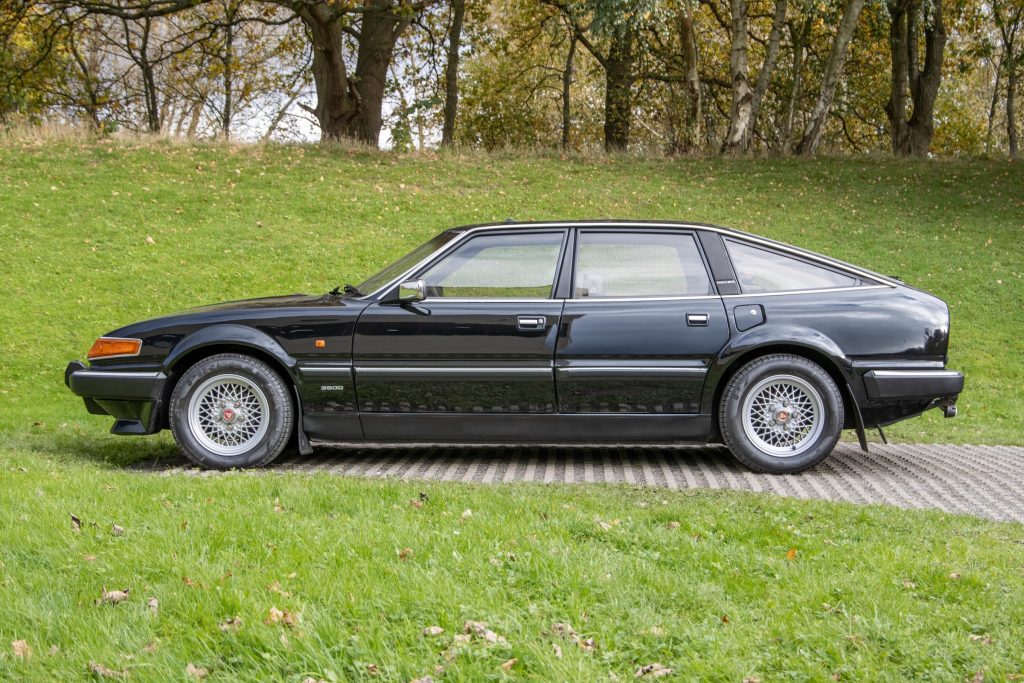
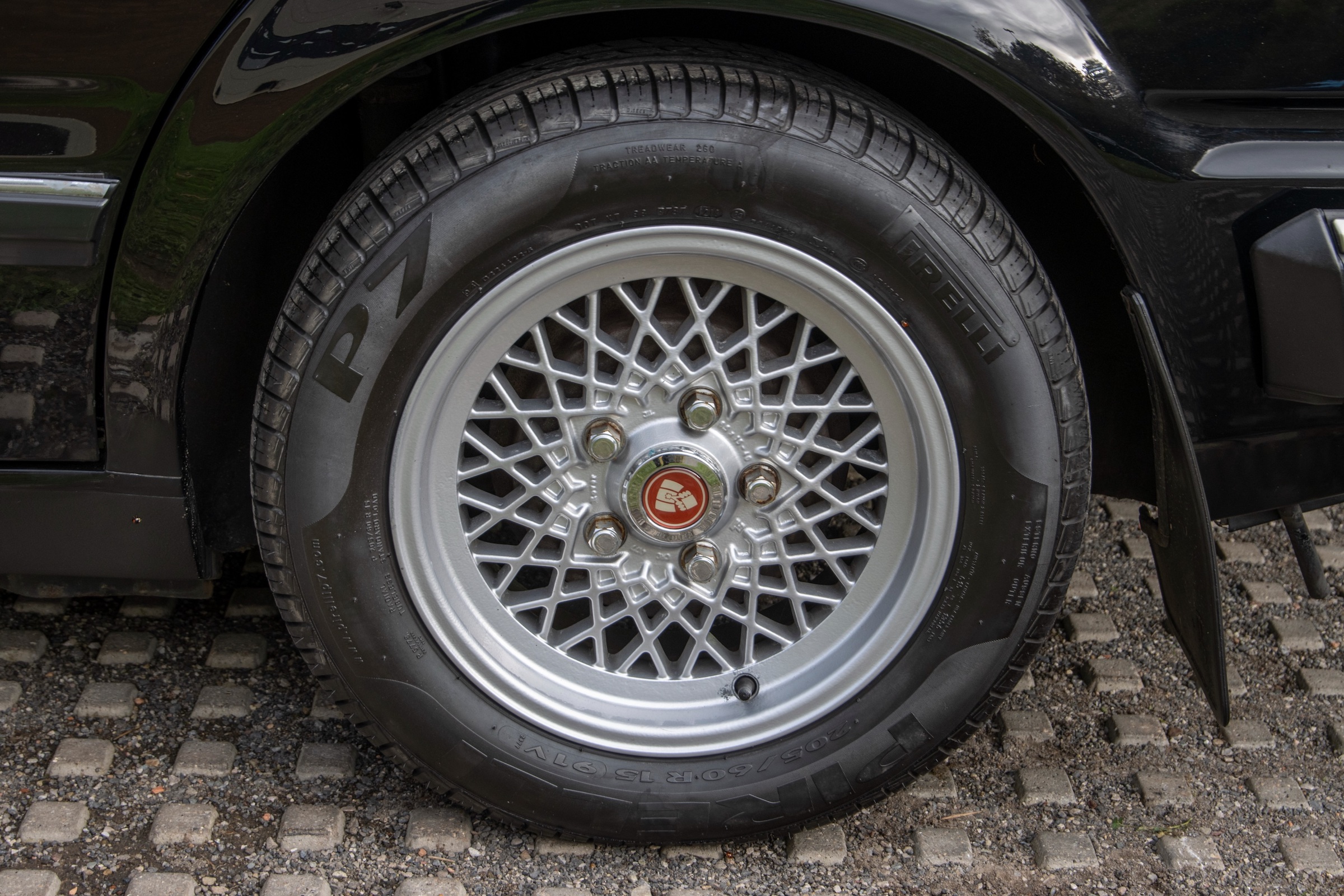
It’s good news and bad news when it comes to checking out a Rover SD1 to buy. The bad news is a lot them were not very well made originally and the car has its fair share of weak points. The good news is almost everything is available to put right any problem you find on an SD1, including original body panels and trim parts that are often difficult to find on other cars of the period.
When inspecting an SD1, start with its bodywork. Wheelarches, door bottoms, floorpans, boot floor, bonnet and tailgate, and the lower grille surround are all prone to rust. You also need to look around the windscreen for rot, and prod the steel around the sunroof if one is fitted. The sills in SD1s tend to be in good condition as the car was fitted with a pressure ventilation system that pushed air through this section and it works well. If any car you look at has rotten sills, it’s probably led a very tough existence.
The suspension, brakes, rear axle, and steering are all simple and easy to service, but the electrics need careful inspection. It’s not a complicated electrical set-up on the SD1, but there are detail differences between cars of different ages that makes ordering the right part trickier than with many of the Rover’s rivals.
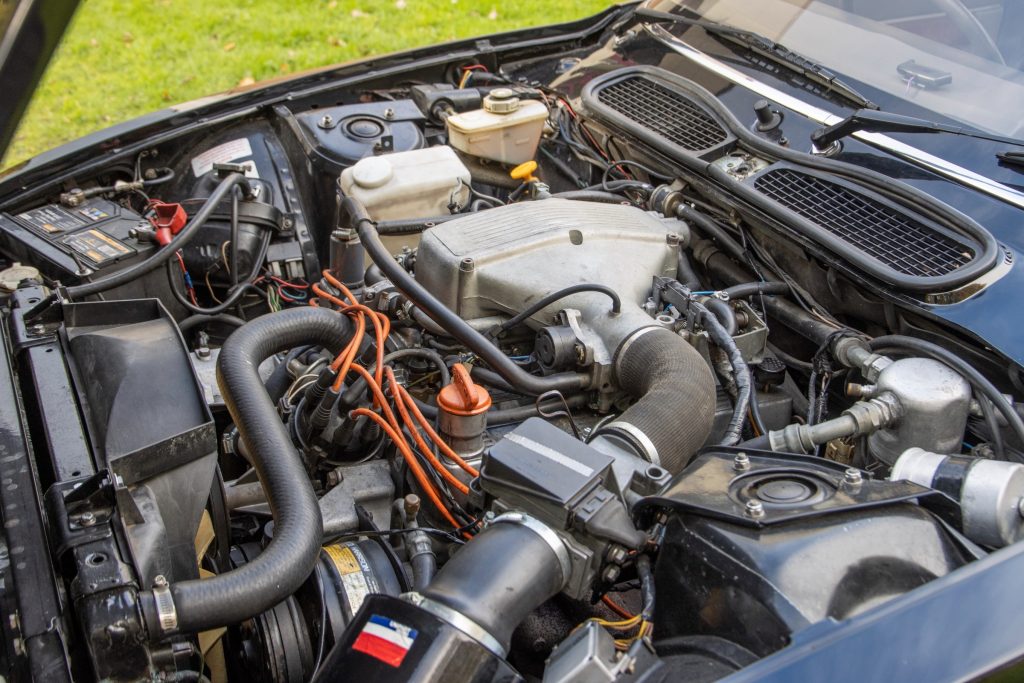
Gearboxes in the SD1 are generally reliable and easy to fix if they do have a fault. Then we come to the engines, which earned a name for being fragile when the SD1 was current. The Rover V8 thrives on regular oil changes to avoid a worn camshaft and noisy tappets. A neglected cooling system will result in blown head gaskets, but everything is available to rebuild or uprate this engine to whatever specification you want.
The six-cylinder engines are better than their reputation suggests. Their key problem area is the oil supply to the camshaft and valve rockers. If this becomes sludged up, the camshaft and rockers will quickly wear and require a top end rebuild, so reckon on changing the oil at no more than 3000-mile or yearly intervals. These engines also have a toothed rubber belt to the drive the camshaft and it can snap, so best to change this as soon as you buy a 2300 or 2600. The four-cylinder 2000 engine and 2400 turbodiesel are both durable.
Which is the right Rover SD1 for you?
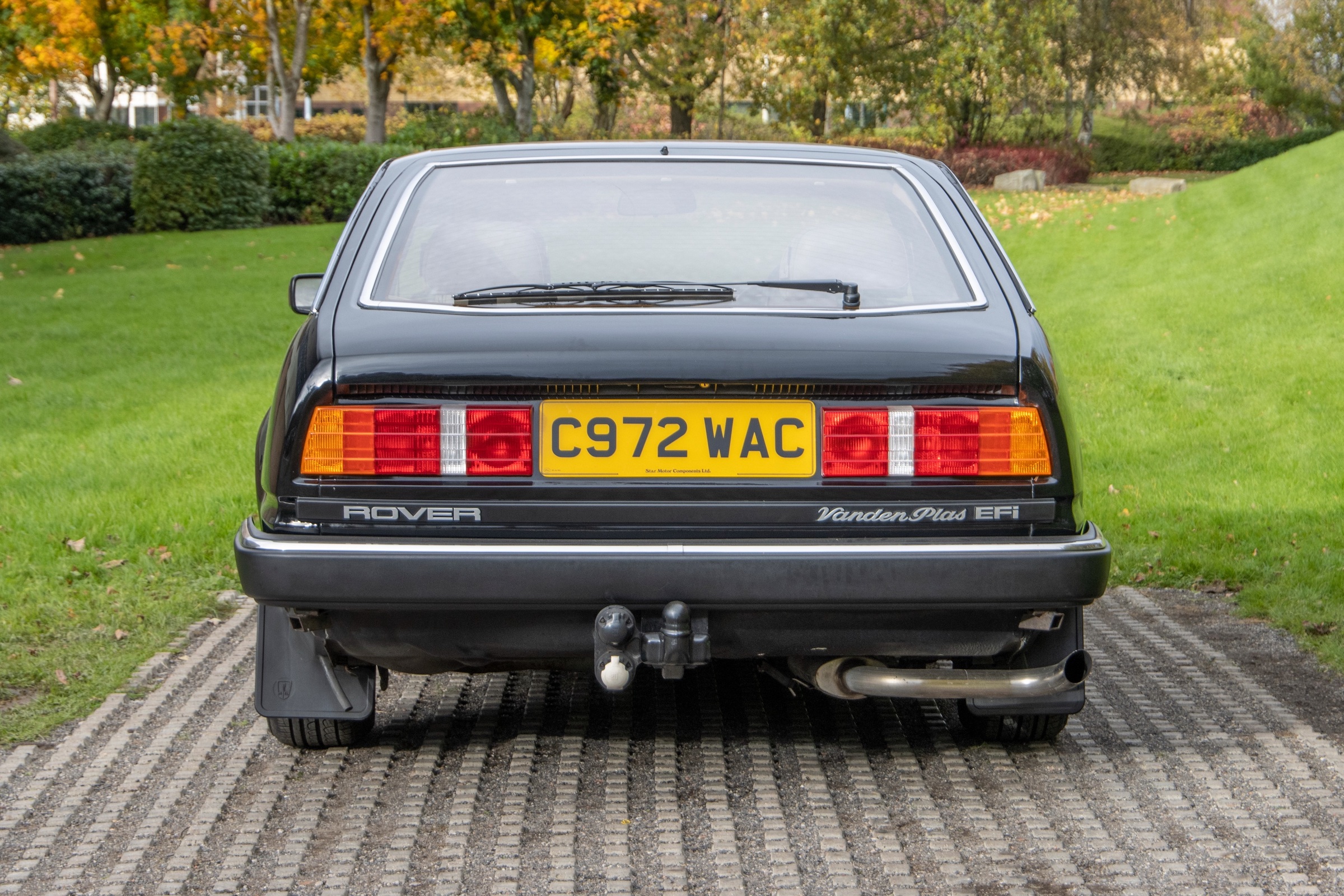
It’s hard to resist the allure of the Rover SD1 with the V8 engine. It’s a smooth, willing motor that sounds great and will easily see this fastback executive keep pace with modern traffic. Fuel economy might temper how hard you drive it, though, as an average of 20mpg is about the best you can expect. The Vitesse returns much the same economy, but buyers will be more willing to forgive it this due to its performance. Even by current standards, it’s a quick car and it’s the most engaging of the range to drive.
However, don’t rule out the six-cylinder cars if you’re looking for a family-friendly classic. All SD1s have a large boot and the rear seats easily carry a couple of people. The 2300 and 2600 are only a fraction slower than the 3500 models, and you get noticeably better fuel economy.
For the same reason, don’t dismiss the 2000 even though it has four cylinders. It’s a smooth engine and decent on fuel, and it pulls well enough that the SD1 doesn’t feel underpowered with this motor. The 2400SD Turbo is appealing more for its oddity value and it would be a great car to arrive in at the Hagerty Festival of the Unexceptional.
Read more
The Handbook of Sloane Ranger Cars: Rover SD1
7 rapid executive cars that gave Germany a fright
13 British cars floored by flaws










Now, as new electric cars enter the market, the true sawdust of the “classic” world will become valueless. Don’t do it.
Listen to Rush’s “Red Barchetta” and do it!